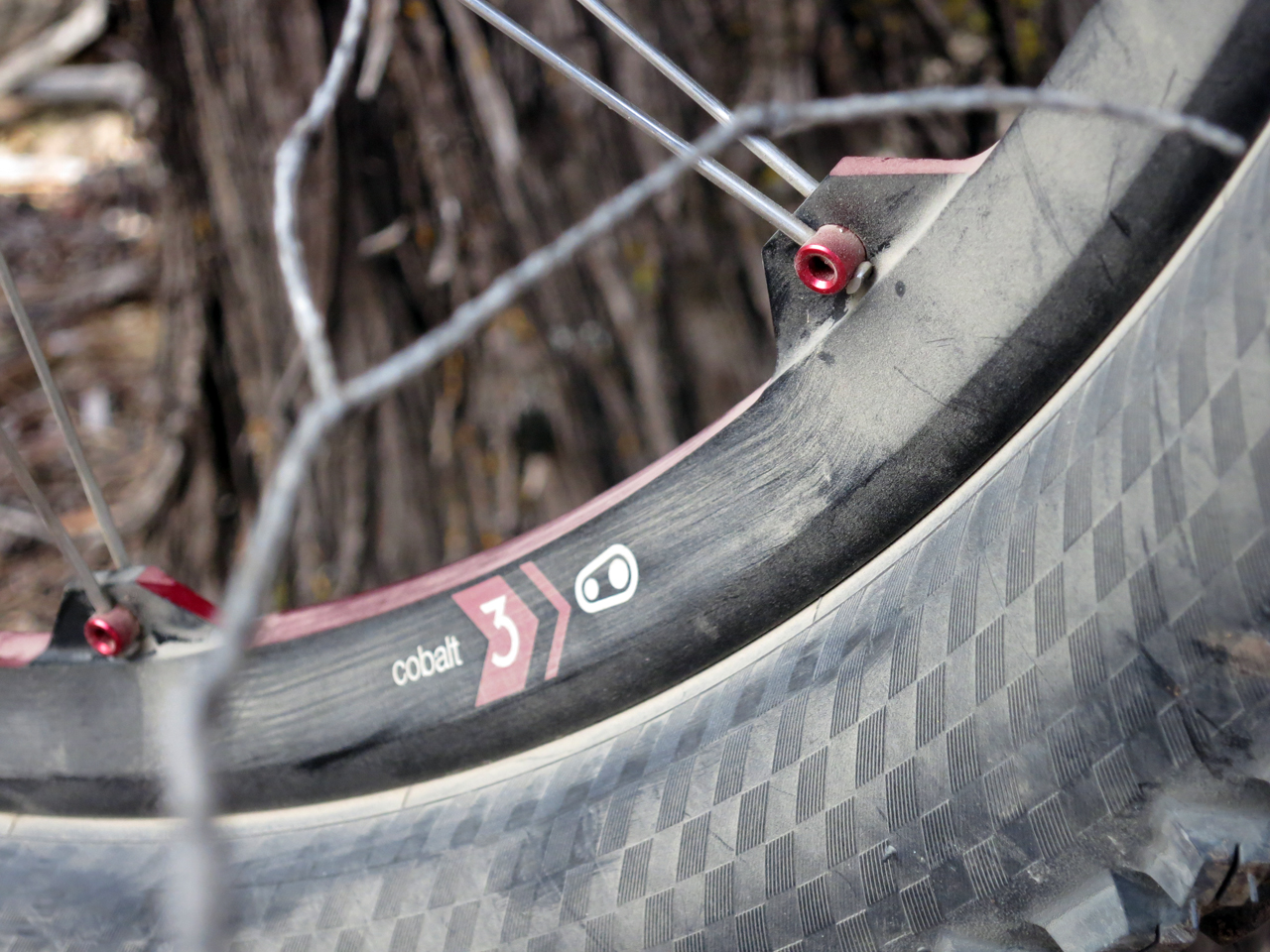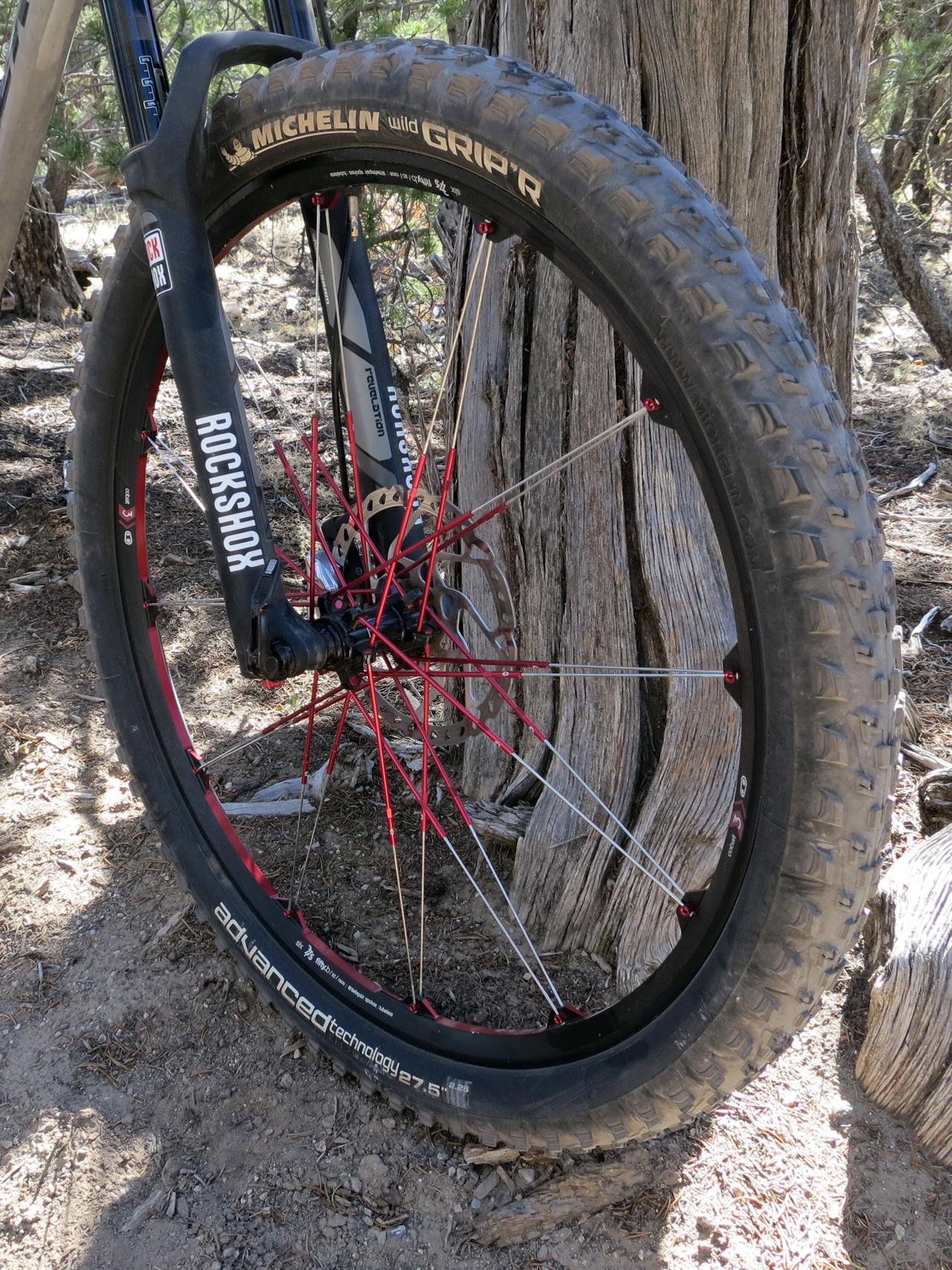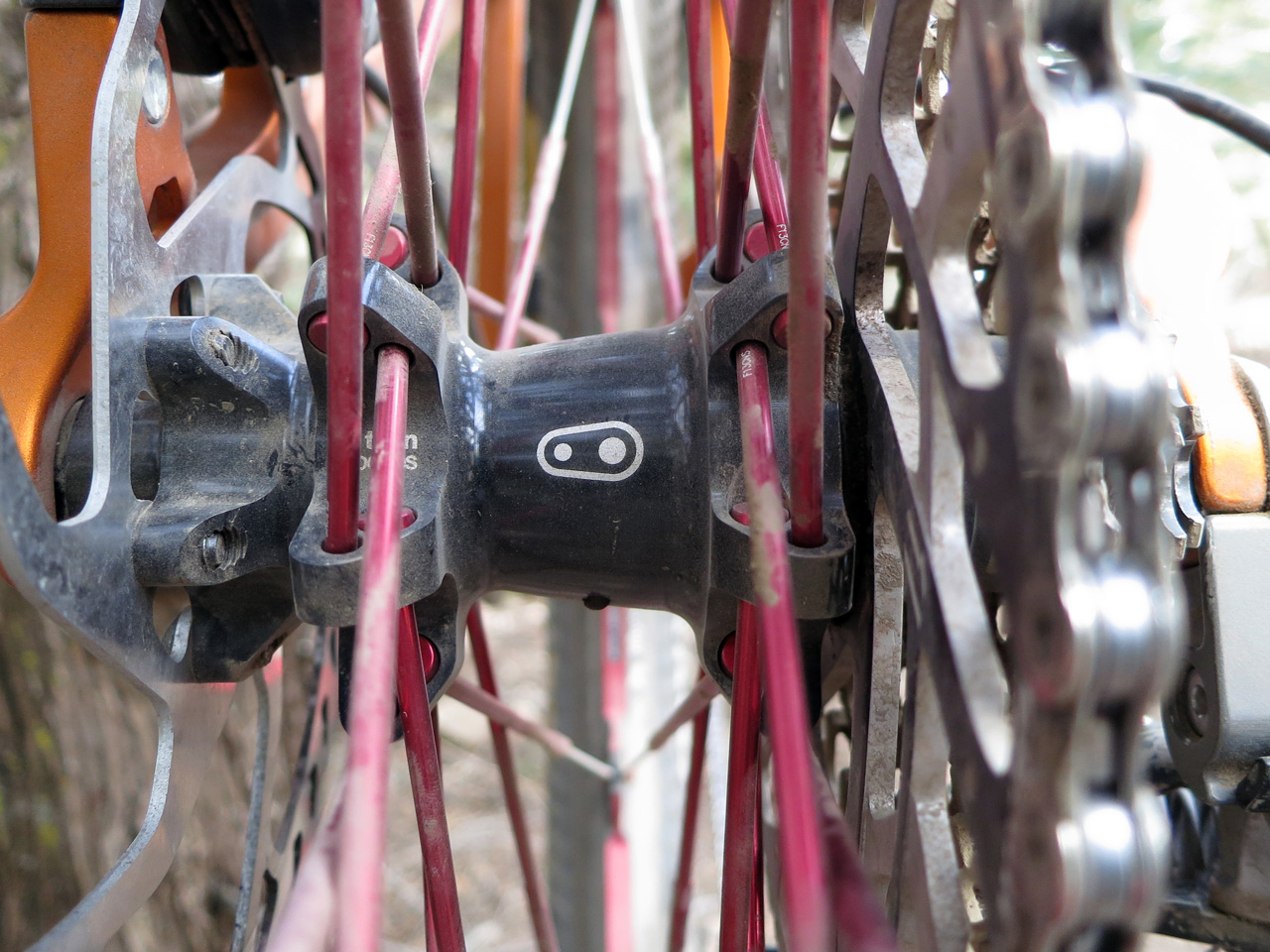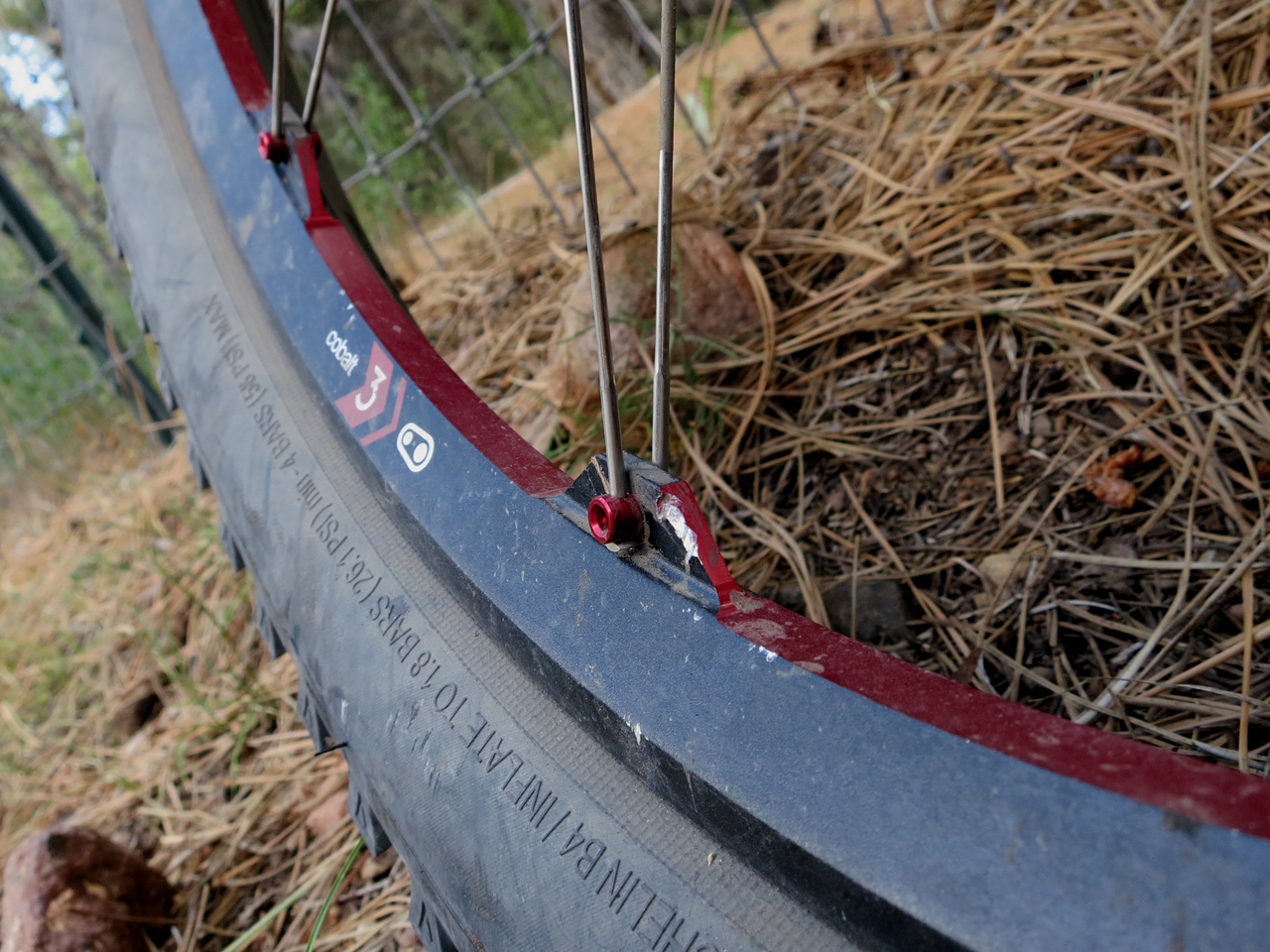Can updated hubs and rims redeem the unique wheel?
 Crank Brothers will be the first to admit that their first wheel efforts didn’t turn out well. At all. As with many of the brand’s products, the original Cobalt wheels were designed from a unique perspective and the resulting product was visually striking. Unfortunately, after spending a good deal of time and energy on the tubeless-native cross section, half-length spokes, and extra-long hub-mounted nipples, an off-the-shelf freehub undermined the project and large numbers of failures did a number on the wheels’ reputation.
Crank Brothers will be the first to admit that their first wheel efforts didn’t turn out well. At all. As with many of the brand’s products, the original Cobalt wheels were designed from a unique perspective and the resulting product was visually striking. Unfortunately, after spending a good deal of time and energy on the tubeless-native cross section, half-length spokes, and extra-long hub-mounted nipples, an off-the-shelf freehub undermined the project and large numbers of failures did a number on the wheels’ reputation.

Eventually the freehub issues were sorted (going from a 17% failure rate to well under 1%) and for 2014 the company launched the third generation of its wheel line. Attempting to keep pace with rider expectations, 2014 Cobalt models are wider (by roughly 10%), stiffer (by 9% in the 29er model), and lighter than before. And we’ve spent half a year bashing the cross-country oriented Cobalt 3 through the rocks and dust of New Mexico’s high desert to see just how they hold up.
While they’re called “cross-country race” wheels by Crank Brothers, the Cobalt 3s might better be categorised as XC/trail wheels. Despite a low spoke count (24 stubby Sapims front and rear), the 3s are on the heavy side for a pure XC wheel: 1,650g in 27.5 (tested) and 1,735g for 29ers. 50-150g heavier than other wheelsets in their class, the Cobalts make up their heft in stiffness, displaying none of the imprecise handling that often comes with superlight alloy wheels.
Though the 21mm inside width will disappoint the wider-is-better brigade, Michelin 2.2s inflate to their advertised width without exposing much sidewall to the sharp and rough. Tyres seat quickly and easily and, as several rides on a slow leak demonstrated, the updated seat holds beads securely at rim-threatening pressures. At this point our test wheels have a few nasty-looking dings (thanks to the region’s flying rocks) and the rear a slight bobble- but after six months nothing that would justify the minor hassle of removing a wheel for truing.

As for the hubs? Those have been entirely trouble-free. Still spinning smoothly, the optional XD (SRAM XX1/X01/X1) freehub has a refreshingly quiet sound while coasting. Only the occasional pop of partial engagement breaks the quiet- but that’s common to three-pawl hubs and nothing has suggested an impending it’s gonna be a long walk out backcountry failure.
Thanks to their red anodised super-nipples, paired spokes, and two-stage annodised rims, few wheels attract more attention than the Cobalts. And for the right rider that’s undeniably part of the appeal. Beyond looks, the short spokes and nipples (the same lengths throughout a given wheelset) make packing a spare or two on long rides or weekends away and easy proposition. Removable-core valve stems would be nice at this price but the inclusion of adapters for both QRs and thru axles front and rear is more than welcome.

Crank Brothers have done a good deal of work to bring the current generation of Cobalt wheels up to snuff. While “XC Race” may be a stretch, the Cobalt 3s have proved themselves a capable ‘all-around’ set that is open to being ridden hard through terrain that has brought lighter and pricier options to their knees. As such, the Cobalts should work well under bigger riders or those who are a little to hard on gear to push the weight envelope. An attractive alternative, the 1/3 less dear (£530/$600), the Cobalt 2s are largely identical with the exception of 50g/set worth of heavier spokes and steel freehub body- and those are even available in 26in.





